Media | Articles
Drop-in LED headlights are better, but still not good enough
I’ve dedicated more time to the notion of LED light upgrades than I’d like to admit. But there’s a good reason for the effort, as classic cars have several reasons for ditching incandescent bulbs in favor of modern technology. LEDs run at a cooler temperature, which is great for protecting vintage wiring buried behind dashboards or avoiding cooking inside a parking light assembly. They are crisper and brighter, which makes vintage gauge clusters look even more impressive at night. They use a fraction of a traditional bulb’s wattage, and the look can be very close to factory. You need not get a modern look, as LEDs are available in “warm white” tones that do a fair job of replicating an incandescent bulb’s yellow-ish tone.
Even my friends come and visit for LED upgrades, since I buy the stuff in bulk, install in my driveway, and get paid back in meals/praise for my noble ways. These lights are simply fantastic and shockingly affordable, provided they need not flash or shoot a beam down the road.

Not everything can be done on the cheap. All LEDs are not created equal, and every location sports unique challenges for the upgrader. Headlights and turn signals require specific engineering that provides cannon fodder for disturbingly heated online debates. So let’s narrow our focus to drop-in LED headlight bulbs, and the galaxy of garbage dumped on the market in the past decade.

These LED bulbs fit in both plastic headlight assemblies and glass housings with the Euro-style (H4) replaceable bulb. If you’ve ever experienced Hella ECE lights (readily available online), you know the H4’s superiority compared to its American counterpart. Too bad superiority doesn’t equate to legality. This is a good time to clearly state this article’s salient points:
- Most drop-in LED headlights are illegal everywhere
- Some combinations of H4 bulbs and ECE housings are legal in Europe and less of a red flag for American law enforcement
- Some of the above are also legal in Canada
- Drop-in LED lights are getting better; it’s only a matter of time before they become legal in North America
I am not here to make any recommendations for your vehicle. Instead I offer a look back at the history of drop-in LED headlights, and show the problems you might encounter with the latest crop of lights. With that, here’s an experiment I’ve been performing with my 1995 Lincoln Mark VIII LSC.
Marketplace
Buy and sell classics with confidence
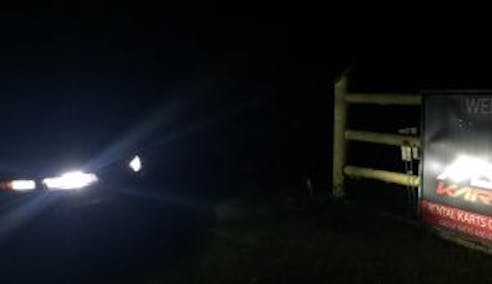
This car was the second vehicle in America with HID bulbs, and replacement parts for this dead technology are both non-existent from the factory (or Sylvania) and lack longevity via aftermarket HID alternatives. I really, really want a modern LED solution that will be somewhat close to the original HID. (It doesn’t hurt that, unlike modern vehicles with illegal LEDs, the headlights are so small that it’s rather hard for them to blind others.)
I am not near my goal yet, but the technology is getting closer and closer. That’s because replacement LED bulbs are getting progressively better as the years go by.
We can’t understand our present reality without glancing at where we started. Some of the first LED bulbs were just corn cob lights glued to a headlight base, sold in our unregulated marketplace for anyone to install on their ride. Make no mistake, the corn cobs are great for interior, license plate, underhood, cargo, or side marker lights. But corn cobs never work for a headlight, neither do the 360-degree lights (above, left) nor the ones with contact lenses (above, right).

Then we have latest design, replicating the position of a traditional halogen “filament” bulb with various levels of success. This concept is crucial: All headlight bodies are designed around the bulb’s filament light output, so LEDs must match the original’s source code. Get the geometry right, and it’s just two LED chips (front and back), an appropriately sized circuit board, and the requisite cooling and wiring to ensure a reasonably durable product. The example pictured above is similar to the units in my Mark VIII, proving it’s somewhat possible to make a cheap LED bulb replicate the 9005-series, single-filament design implemented in my big Lincoln.
Use the bulb above as your high beam and the odds are in your favor in terms of safety (i.e. you won’t use it around other motorists anyway). Using something like this as your low beam? That’s a riskier proposition, something I’m still too leery to try.
But what about a cheap, dual-filament bulb? That’s where things get really dicey. Compare the cheap bulb I bought (left, under $25 with taxes and shipping) to the Philips Ultinon Pro6000 H4-LED (right, $150), which recently became road-legal in Germany. They both have LED chips where the filament lives but the Philips’ chip is crafted/shrouded appropriately to ensure it spits light into a headlight housing à la halogen filaments. The craftsmanship in its circuit board and cooling fins are likely why this passed German certification standards. Clearly my purchase will give me buyer’s remorse, but let’s see just how regrettable it shall become.
Whenever you see photos like this without data from a lux meter in a more clinical setting, please immediately discount the author’s analysis, as cameras do more to distort the representation of actual light output more than social media distorts … well, just about anything.
Since I am not interested in providing a positively skewed review of these bulbs, we can draw valid conclusions without getting all scientific-like. My 2011 Ranger’s low beam was clearly throwing out more light with the new LED bulb (left), but the pattern lacks the original’s strong cut off. The latter ensures oncoming traffic isn’t blinded, so we can safely say this cheap LED light is already making the wrong moves.
Put both LEDs in and it looks less incorrect, don’cha think? I will admit this amount of light is both acceptable and welcome in rural areas where oncoming traffic (and law enforcement) will be more tolerant of such a performance. The aforementioned $25-ish asking price could be great insurance when driving down a lonely dirt road in the dead of night! Except no, because it gets worse …
Going for a brief jaunt in my neighborhood, the low beams (top) replicated the factory light output reasonably well, aside from the troubling lack of an upper boundary cut-off. The extra light thrown at the center/sides was welcome, but there’s no way I’d use these outside of my controlled environment. But what really chaps my hide are the high beams (below), as they have a better cut off for low-beam use. Great, except high beams are supposed to throw more light down the road!
I was tempted to switch pins on the wiring harness to make high into low and low into high. But since I am not an influencer here to sell whatever I’m currently discussing, this is where I motored back to my driveway, reverted back to halogens, re-boxed the LEDs, and began the return process with the seller.
As JFK once said, “Change is the law of life. And those who look only to the past or present are certain to miss the future.” I am thrilled that I engaged in this experiment, as one day I will find a replacement, drop-in LED headlight bulb that will make my efforts worthwhile. That day hasn’t come for me, but I certainly look forward to making that change one day!









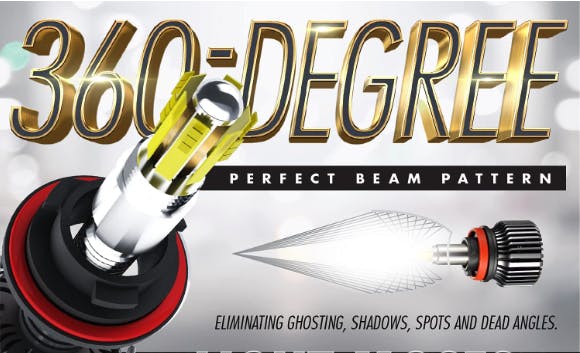
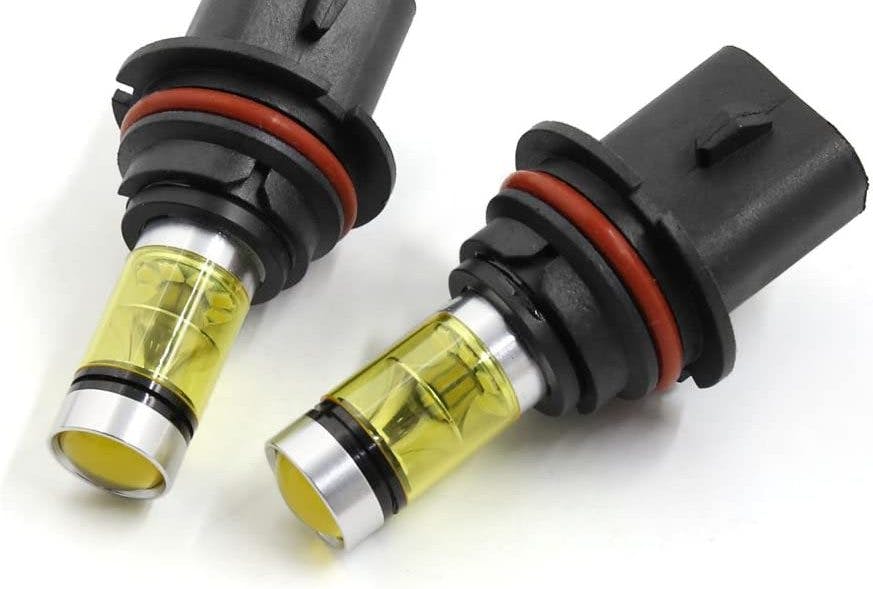
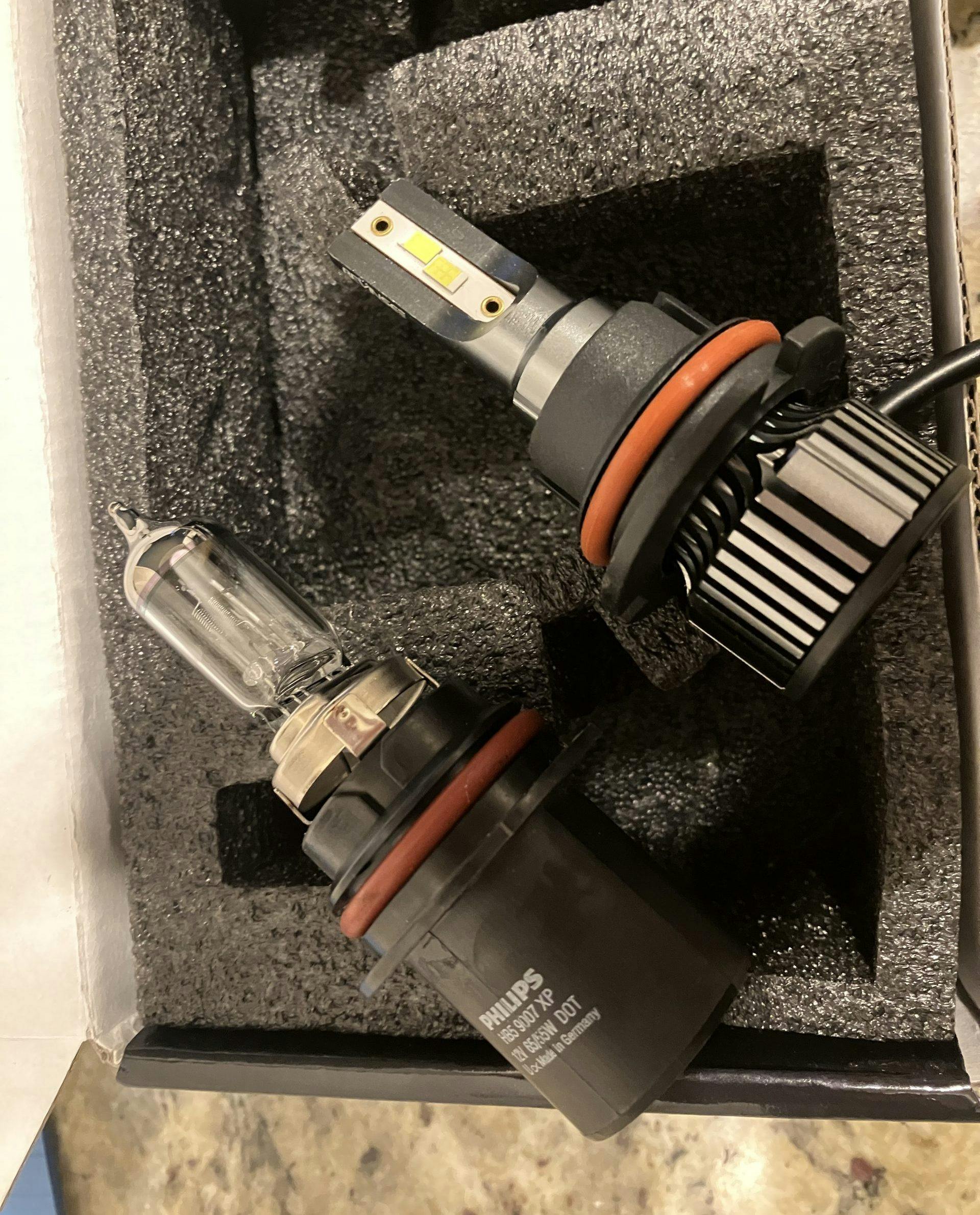


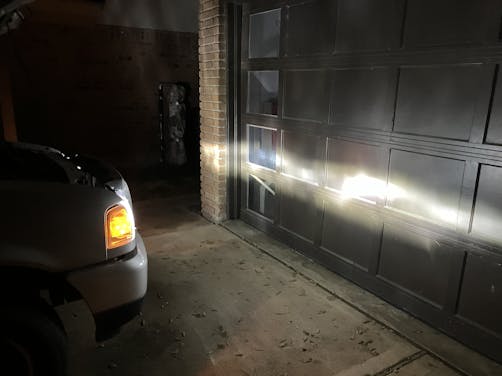
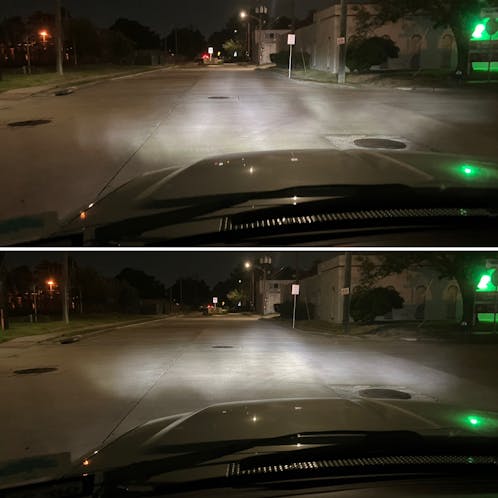













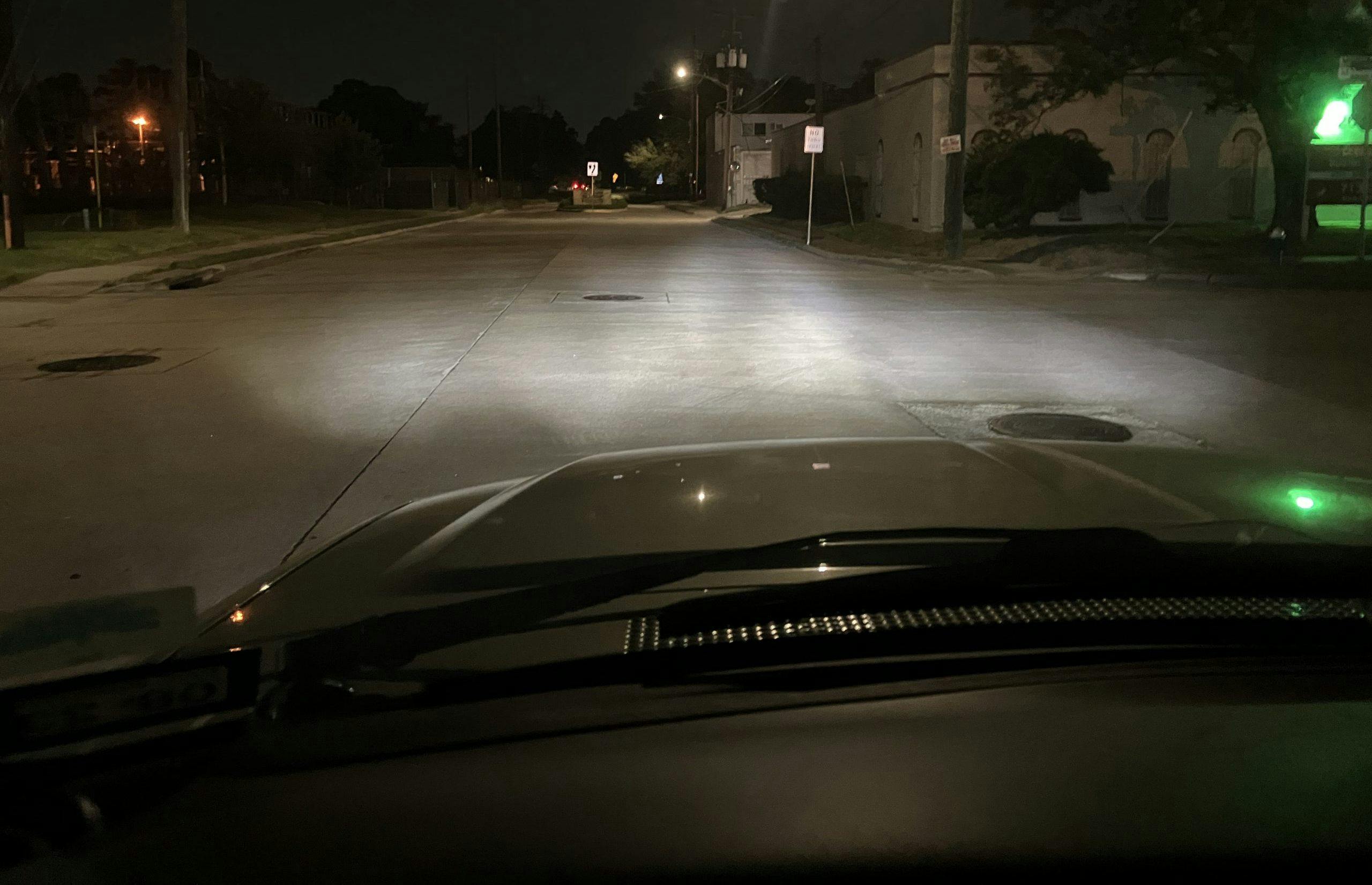
Really Hagerty? From high dollar collectibles to eBay specials?
2 issues, The FAN that is needed to cool the LED bulbs do not last and the horrible cutoff or lack of for all those folks that replace standard halogen bulb headlights with no shield. Just a horrible idea all the way around.
I’d be willing to deal with an unreliable fan if the beam quality wasn’t so horrible! But yes, I see your point and I expect the Philips to be much better.
Here is an interesting topic. This is one many are involved in, many will argue as much as oil or politics yet many have no clue.
LED is just a very involved topic yet still very miss understood. Yet people become obsessed with these lights.
Sanjeev I am not speaking of you and you are correct that not all bulbs are made the same.
This tech has more facets than a headlight lens.
The best systems are new cars that are designed to make use of this tech as it has the correct wiring and lenses to get the best performance.
Slapping these bulbs in older lenses may or may not improve the lighting. Keeping in mind the original system is tuned to the older bulbs.
The bulbs come in many styles types and technology. Cooling is dire but sealing is more important. Bulbs in many cases need index. Other need wire it changes and additional equipment to make them work.
In the end in many cases there is only a slight gain or improvement after spending a good amount of money and time.
Headlamps today even the oldest systems in the new cars are light years ahead of the old 6 volt lights of the 50’s.
All today light enough that you will never out drive the light at any American speed limit. They all meet the regulations and few even burn out anymore like in the past.
Also you need to respect the other drivers. Glare is becoming bad even on some factory systems. The GMC Terrain was just recalled for glare. Many Ford trucks can be blinding to other drivers.
Adding these aftermarket lights can create issues for others. Elderly cataract folks are hinders from driving much at night due to these lights.
Other issues like lifted Jeeps and leveled trucks need head lamps re aimed. Jeeps are horrible as so few adjust the lights.
I am not anti light. All I am saying is ask yourself do you have enough light now or do you have a real need for more light like off roading.
Are you just upgrading because you have a fixation on this? Many do if they are honest.
I admit I had considered upgrading my truck but I already get flashed for my stock lights. My lights are more than able to fill my needs. I don’t do trails and back roads are lighted enough to see the deer or turkeys.
I do have to confess I did upgrade my Chevelle SS years ago. I found aircraft landing lights at a local AC Delco dealer. They fit my high beams.
They were more for conversation as on a cool night you could feel the hear 10 feet out. They said visibility was in miles. Lol.
I did not use them on the road.
I will not say not to upgrade. Like Sanjeev many things like the dash make great use. Also some vehicle with the right combinations do enjoy some improvements. But do your home work and know what you need vs just buying something off the web and really just end up poorer and not as bright.
Years ago (late ’70’s), I had a BMW Bavaria that I converted the low/hi outboard lights to Euro-spec h4’s w/80 lo and 100w hi bulbs. The inner high beams were aircraft landing lights and WOW did they light up the road. You could literally see a mile down the road with the brights on. People used to flash me with the low beams on, then I would hit them with the brights and you could see their arm go up in front of their face! Got stopped by a cop on the interstate in IA once back in the 80’s and he just wanted to know where I got them ($4.99 at NAPA). Great times! I wish our stupid gov’t would get on board with the lighting rules for the rest of the world so we can all get the benefit of some of the newere advanced lighting technology.
“This tech has more facets than a headlight lens.” is such a good comment I wish I thought of it for the article! Excellent insight as always, hyperv6.
Plus one to you. I will have to owe it for now.
There is some good to the new forum but it is much more clunky to use and see the stories.
We had a great discussion of this going in the good ol’ days of Community. Not to get too far off topic, but have we lost the ability for the readers to post threads, or am I missing something?
We can reply to each other, like I am to you right now. Other functionality seen on communities/forums are unavailable with our current setup.
How does one “like” a comment using this new format?
Sadly that feature no longer exists. Well, at least for now.
I’m in favor of any head light tech that improves visibility without being a nuisance to other drivers.
It seems the cost of most newer lighting systems is pretty wacky, but a lot of that is the design of giant pod housings that need replaced for a cracked bit of plastic on the outer lens. Ease of changing the bulbs is another issue I have seen.
Not all old things were good (77 LTD headlight rings were fragile and seize prone… so they break) but most of them were simple to deal with at least.
The problem now is that all LED headlights can be seen as a nuisance, because of the aftermarket junk that has conditioned everyone to hate them. Someone told me that the LED arrays in Rivian trucks blind people…maybe the one they saw was modified, but the factory setup is no different than any other luxury car with fantastic light output in the right places. But if some folks just see a moment of dazzle from an LED, they assume it does it all the time like aftermarket junk.
The real problem is lack of education on LED and understanding how they work and things that they need.
Also not every car is a prime candidate for the transplant.
Note too a system designed for them is much more superior over one that just swapped bulbs. The lens are designed for them and now the laws are permitting the new systems that articulate now. Cadillac and Audi are now offering them.
Also the market has a lot of Cheap crap on it that people spend a lot of money on and find issues.
LED was kind of like the deal when the third brake lights and cell phone antennas appeared on cars. People saw them and added them to look more up to date. But in this case it takes a bit of understanding to get these right and in some cases they may not really be better depending on the light lens. As they say your results may vary.
Bu the truth is nearly all car lighting systems today are pretty good only the older cars are weak as in pre Halogen.
We had a 38 Chevy once that a MAG lite on the fender would have been better.
I’m very interested in that Philips bulb! Philips has been doing very good things lately with LEDs (google for “Dubai Philips LED” to see some amazing efficiencies for home/office lighting) and I’d love to be able to have a long lasting but brighter LED bulb that’s also legal to use in my existing halogen headlights. Hopefully Philips will try to get them legalized in the USA.
I don’t have a problem with the light output of high output halogen bulbs, but they only last about a year. Getting the best of both worlds with an LED bulb would be very nice, high light output and long life. Even at $150 I’d buy them if they were legal.
Agreed 100%. I would pay even more than $150 for those bulbs if they were legal here. In the Ranger used here, I have the good halogens (that last 1-2 years) and while I do like them, there’s nothing quite like what an LED can do. Or will do, eventually.
I find the headlights in my recent family cars, BMW 3 series wagon, Infiniti Coupe, to be miserably weak in comparison with the European spec H4 bulbs in my little British toys with their round glass/metal headlights. You would think that manufacturers must constantly strive to improve their products, but, it seems in many cases style is more important to them than function.
You haven’t tried these yet. There’s a reason they are the world no 1 in Automotive Lighting
https://www.osram.com/ecat/LEDriving%20HL%20INTENSE%20H7-H18-LEDriving%20HL%20INTENSE-LED%20high%20and%20low%20beam%20lamps-Car%20lighting-Automotive/com/en/GPS01_3836532/ZMP_4063467/
I will if they ever come in a 9007/HB5 configuration!